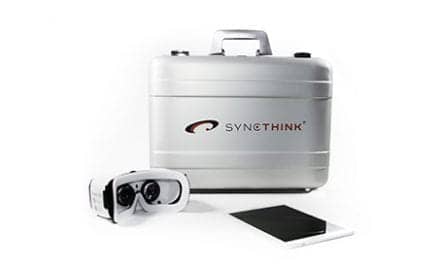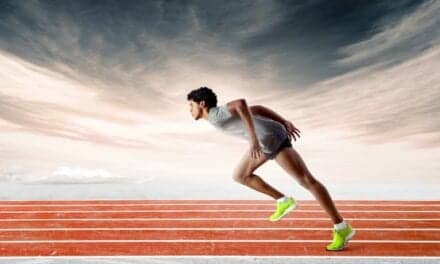By Antoinette M Shields, AIB-VRC, PT, DPT
Running is a versatile sport that can be done just about anywhere. Various settings and courses give runners a multitude of choices and challenges—from trails with steep inclines or uneven paths to the beach for those who love the sand under their feet. Some high school or collegiate athletes prefer running on a track, including short-distance sprinters, long-distance marathoners, and runners attempting their first 5K. Whatever a runner’s goals or abilities, everything must start with basic core strength and stability, along with single-leg strength, stability, and proprioception.
Running is essentially hopping from one lower extremity to the other repetitively. If one of the limbs is weak or injured, compensation may occur within the same or opposite limb, leading to further injury from overloading and overworking. Most runner injuries are secondary to a weakness or insufficiency somewhere else in their gait mechanics. One small insufficiency with repeated impact can magnify quickly.
Further Reading About Sports Medicine, Running: When You’re Good, You Expand
Davis Physical Therapy & Sports Rehab provides treatment for athletes of all ages, skill levels, and abilities using data-driven and research-based technology to assess and develop a personalized plan of care to achieve each patient’s specific goals. Many of the athletes we treat are runners or those running as a part of a sport on the field or court. They range from those at competition level to those who simply use running as a mental or emotional outlet. It is the psychological effects that are often overlooked. At Davis, we understand the need for physical movement and activities and are committed to helping patients through the mental struggle when injury interferes with their sport or emotional outlet.
Assessments for Runners
When treating runners, it is imperative to look at the whole patient, not solely the body part that is hurting. Ideally, it is recommended that a healthy runner come in for baseline testing to prevent a potential injury, but that is not always the case. Oftentimes we see a patient after the injury has already occurred. Assessments, such as the athletic movement index (AMI), are an invaluable tool which allow us to look at each limb’s impact mechanics, flexibility, core strength, and stability to determine any deficits.
The AMI assessment takes the guesswork out of measuring the degree of valgus or tibial inclination and replaces it with hard data. Using this information to identify insufficiencies helps develop a plan of care to rehabilitate, improve performance, and decrease the risk of further injury. For example, if a runner complains of right knee pain but an AMI test shows deficits of increased speeds (lack of control and proprioception) and valgus with left lower extremity, the patient may be using the right lower extremity to compensate for the other’s weakness.
Maintaining good limb symmetry with runners prevents injuries and gait compensations. For those running on a trail or in a neighborhood, single-leg proprioception and balance are extremely important. A runner might stumble on a rock or step on uneven terrain, curbs may jump out, or, like I have experienced, a toe may get caught on an uneven sidewalk. With any of these scenarios, strong, stable joints and good mobility to rebalance allow for a safer recovery.
A standard single-leg get-up test is a quick and useful tool that provides instant insight and easily identifies a visible and felt weakness between one limb versus the other.
Anti-Gravity Treadmill
At Davis, we also use the AlterG Anti-Gravity Treadmill when treating runners—specifically for gait analysis in order to see if a patient is offloading and at what body weight he/she can run pain-free. This advanced technology allows us to gradually increase the body weight as a patient’s strength improves and pain lessens. This steady, pain-free progression ultimately achieves a full weight-bearing return-to-run program.
Beyond treating run-related injuries, the AlterG is also great when training for longer races and runs, decreasing the impact on joints while allowing a runner to continue doing what they love—run!
Strength and Prevention for Runners
Most runners do not think of strengthening when they first come to rehab. However, strength is often the missing component if there is a weakness in any muscle or muscle group at increased speeds or mileage. The use of blood flow restriction therapy is an intervention we use regularly to add strength as an alternative method of building muscle when the joint may be in pain and cannot handle a load for strengthening.
Hindsight is 20/20, and prevention often comes second to an injury. We see this often with runners who pick up and run without the necessary warm-up, stretching, or building a strengthening program into their routine. Even with the great advances in technology and physical therapy techniques available, a comprehensive plan that addresses a runner’s deficits would not be complete without a home exercise program focused on core, hip, and lower extremity strengthening along with stretching to improve flexibility. It is crucial to properly warm up and stretch daily, recognizing that four days without much stretching or strength training cannot be made up with one hour of physical therapy.
As PTs, we are responsible for educating patients about what their body needs and developing a mutually agreed upon home program. Then it is in the patients’ hands to do the work with the PT’s guidance.
Antoinette M Shields, AIB-VRC, PT, DPT, is the director of clinical operations for Davis Physical Therapy & Sports Rehabin Medford, NJ. For more information, contact editor@ptproductsonlinecom.
Featured image: Physical therapy for runners includes assessments. Photo: Davis Physical Therapy & Sports Rehab





